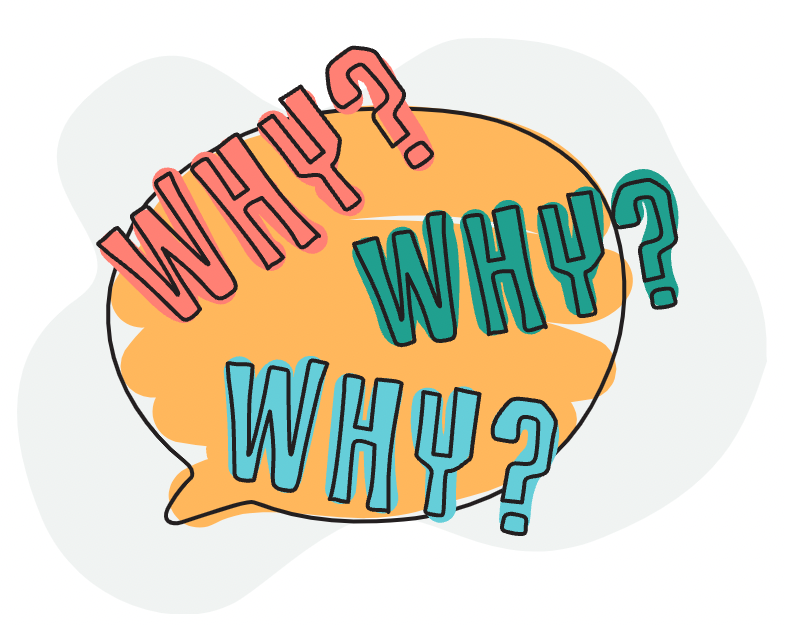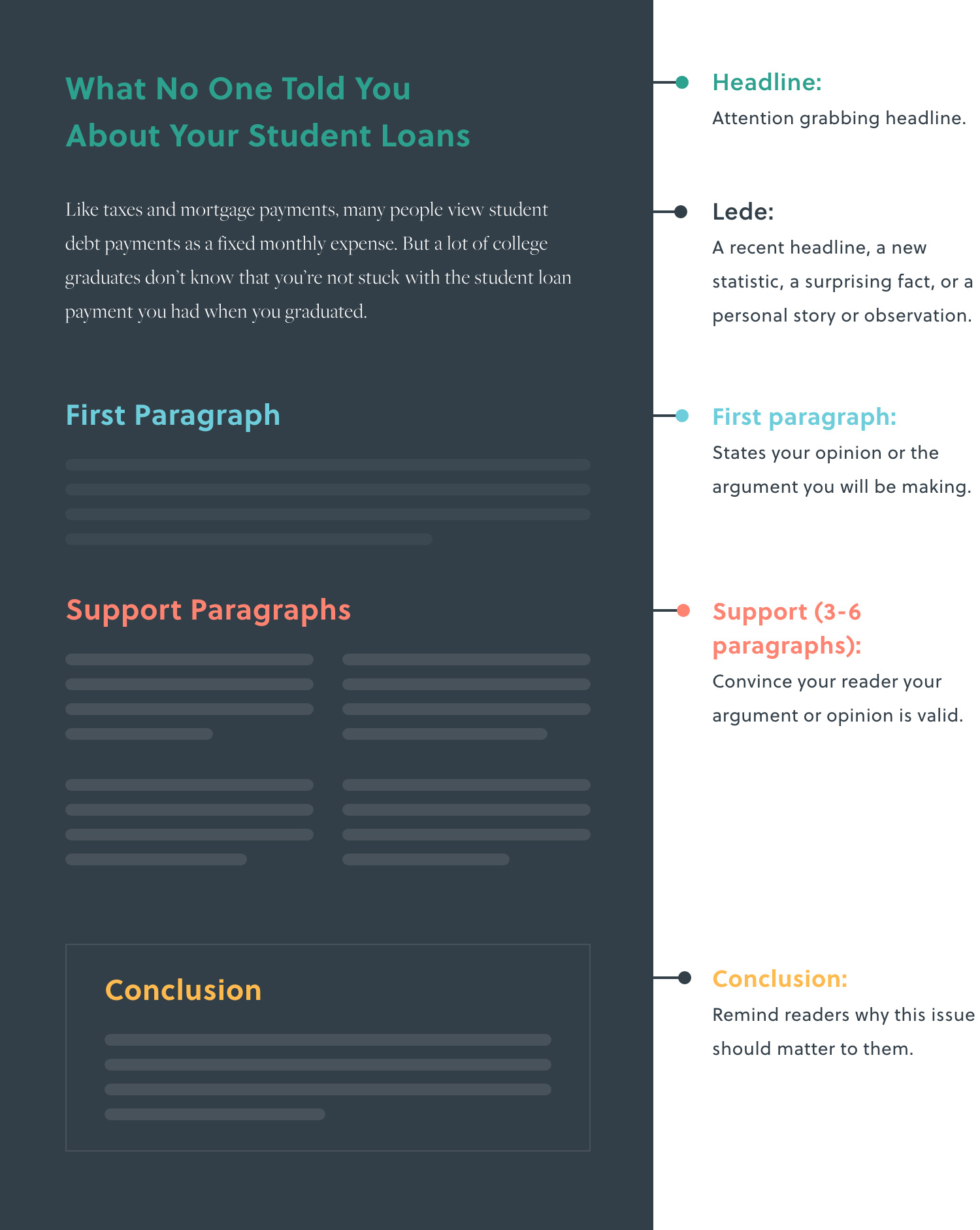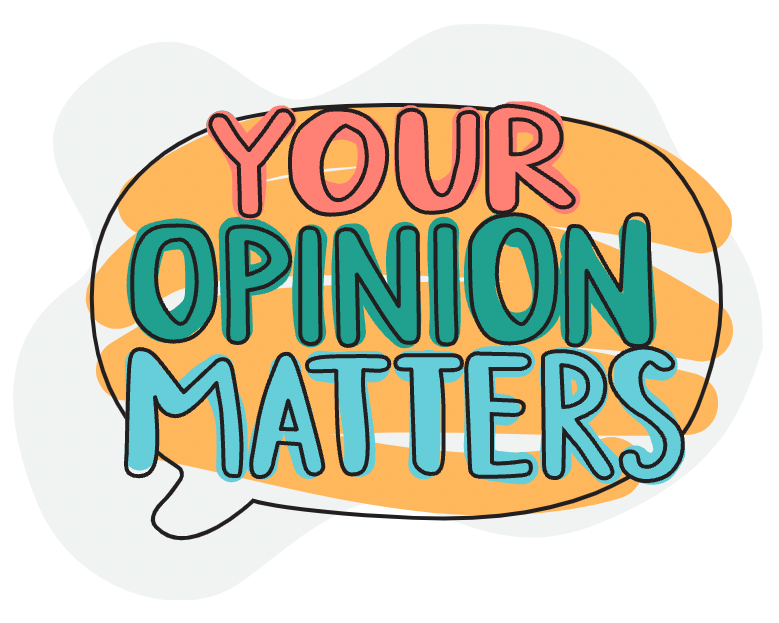How To Write
An Op-Ed
INTRODUCTION
What You’re Going to Learn
In this post, you’re going to learn how to write an op-ed in 2024.
At Pinkston, we help develop, edit and place hundreds of op-eds a year for thought leaders, CEOs, politicians, professors and other experts in national publications ranging from The Wall Street Journal to The Washington Post and USA Today and more.
In this guide, we’ll be discussing what makes a successful op-ed and how you can improve your chances of getting yours published. It includes:
So, if you want to have a better chance of getting your op-ed published in top-tier publications, then this guide is for you.
Let’s start with the basics:

Understand the Media.
Our Guiding Principles
What drives the news cycle? What are reporters looking for in a story? How can you break through the noise? Learn how you can tell your story clearly, effectively and uniquely.
How to Write and Op-Ed
Don’t have time to read the whole guide now?
We’ll send you a free digital copy so you can read it at your own convenience. Plus, we’ll include a bonus chapter.

What is an Op-ed?
An op-ed is a short essay that expresses the opinion of an author on a particular subject.
The term “op-ed” comes from an opinion page created by the New York Times in 1970, which meant, literally, “opposite the editorial page.” The term stuck, and today, op-eds are found everywhere from print publications to online media.

Why Write and Op-Ed in 2025?
Are op-eds even a viable form of communication in a time when the traditional media landscape is shifting?
In short: yes, if you do it correctly.
Writing an op-ed is an opportunity for you to write about the issues you care about or introduce an idea to new audiences. It’s also a chance for you to tell your story on your terms. In today’s increasingly fast-paced reporting environment, it’s often hard to make your voice heard through social media or television appearances alone. With an op-ed, you can craft a piece that will present your truth in an unfiltered medium and make a lasting impact on your audience.
Op-eds establish you as a respected voice in your field and open the door to new opportunities. As a matter of fact, successful op-ed writers have gone on to gain speaking, hosting and panelist invitations, book deals and other opportunities.
Some people think writing an op-ed is just preaching to the choir. But a 2018 study by Yale and the Cato Institute showed that op-eds have a strong and lasting effect on people’s positions and can actually change their perspective on an issue – not just in the short term, but in the long term.
In the study, researchers split 3,500 people into two groups—a control group who did not read any op-eds but were asked about their positions on specific op-ed issues; and treatment groups of those who read op-eds from the NYT, WSJ, Newsweek and USA Today on various topics, like climate change and federal spending. Sixty-five to seventy percent of readers said they agreed with the author of the op-ed they read. Only 50% of the control group agreed with the author’s point.
The effect is not restricted to an uneducated audience, but it also goes for key opinion leaders. The study was also performed with a group of 2,000 “elite readers”: professors, politicians, journalists, thank, bankers and congressional staffers. The results were the same.

Writing You Op-Ed
STEP 1:CHOOSE YOUR TOPIC FIRST; KNOW YOUR AUDIENCE
Before you start writing, you should identify your ideal publication and who the typical readers are for that publication.
Your piece might not end up in that specific publication, but it’s a good way to determine what the tone of the writing should be.
For example, if you’re writing for USA Today, you’ll be writing for a more general audience – anyone from a stay-at-home parent to a business traveler in a hotel.
If you want your piece to appear in The Washington Post, consider writing for politically-minded readers.
For the Wall Street Journal, your readers will probably be people well-versed in business and finance.
Read the outlets where you would like your op-ed to be published so you can get a sense of what topics they publish and what kind of writing they like.

STEP 2: MAKE IT CURRENT
Track the news for the topics that matter to you and think about tying your op-ed to something that’s happening in current events – for example, a political event, a study that’s just been released, or a change in the markets.
Besides news-of-the-day angles, you can also tie a piece to big-picture topics or challenges that are relevant to a modern audience – like taxes, retirement, or health care.
Remember that the news moves fast. If your op-ed is referencing something coming up – like a holiday or an election – try to write the piece as early as possible, before a publication’s slots on that topic fill up.
If you’re writing about something that has just happened, you’ll want to write and submit it as soon as possible – ideally within hours of an event’s occurrence. The ideal time to publish a piece about something that just happened is the day after the event.
In reality, your op-ed should fall into one of these three categories. Your title, or headline, should state this topic upfront so the reader knows exactly what to expect.
| TOPIC | EXAMPLE |
| A recent or upcoming event | “Putin Will Emerge Stronger From Yevgeny Prigozhin’s Death” (Newsweek) |
| A new or provocative take on a commonly discussed topic | “Community college over the Ivy League? Here’s why it makes sense.” (USA Today) |
| A neglected topic that needs to be talked about | “Why haven’t we made it safer to breathe in classrooms?” (The New York Times) |

STEP 3:WRITE ABOUT WHAT YOU KNOW AND HAVE AN OPINION
It’s important to pick a topic you’re passionate about – if you care about what you’re writing about, your readers will too.
This topic can be something related to your work, but it could also be something you came across in your day-to-day life. If you’re writing as a representative of a company or organization, think about the issues that might help strengthen that organization’s profile.
Next, think about what take on that topic might catch a reader’s eye.
This could be a provocative or unexpected view on a current issue, a solution to a problem or challenge people face, or a new thought on a neglected subject.
If it’s a news headline, what is your unique take on it? If it’s a more general topic, think about why this issue is relevant to people right now.
Regardless of your take on a topic, your piece should always have an opinion or an argument. An op-ed is not simply an educational or explanatory literature.
Remember that it’s okay to use the first-person “I” voice in an op-ed.
Here are some examples of op-ed topics:
- Carbon offsets are not enough. Leaders need to change the way we work to address climate change. (Fast Company)
- The Great Reshuffle is over. Welcome to the Big Stay. (Fortune)
- Why this modified pig heart transplant is a huge deal. (CNN)
- Nuclear power could save air quality. At what cost to the water? (LA Times)
THE WRITING BASICS
| LENGTH | 600-800 words. |
| PARAGRAPHS | Fewer than four sentences each. A few one-sentence paragraphs can also be effective. |
| SENTENCES | Use mainly short, declarative sentences. Avoid complex sentences with multiple commas. Use active voice, not passive voice. |
| LANGUAGE | Simple. No technical or academic jargon unless it is for a trade publication. Ask: Can this be understood if someone’s reading this quickly on their phone? For style, stick with the AP and Chicago style formats. These are formats specifically geared towards publishing news and media articles, and they will help you craft a voice that best speaks into the current cultural moment. |
| STATISTICS | Include several of them. Use reputable sources and track down the original source. Always hyperlink your sources. |
Op-Ed Structure
Op-eds don’t have to follow the same structure or pattern, but generally, this is a good road map to follow:


STEP ONE: THE LEDE
The lede, also known as a hook, is the opening sentence of your op-ed. It is what will hook your reader and should describe the event, situation or issue that prompted you to write your op-ed in the first place.
This can be a recent headline, a new statistic, a surprising fact, or a personal story or observation. You’ll want to keep this in the first paragraph.
Your lede could be:
- Something that just happened, is happening or is coming up in current events. For example: “After the U.S. Supreme Court’s ruling that a Colorado web developer may refuse to create wedding websites for same-sex couples, the implications of the decision are becoming clear.” (AdAge)
- Recently-released research, for example, “A recent study by the Pew Research Center suggests that the content of Dr. Martin Luther King Jr.’s seismic “I Have a Dream” speech is fading in Americans’ collective memory.” (USA Today)
- A generally relevant topic that people should take note of.
- A persona story or observation that’s relevant to your argument.
To read more examples of successful ledes, download our “How to Write an Op-Ed” guide.

STEP TWO: THE FIRST PARAGRAPH
Next, you’ll want to state your particular argument or opinion on this hook, and why it’s relevant to a reader. This should immediately follow the hook, and should be conveyed in one to two sentences within the first or second paragraph.
Here’s an example of a strong op-ed opening paragraph:
“A 40-year-old man arrives in my hospital’s emergency department, blue from not breathing. It takes several rounds of medication and ventilators to save his life. That same day on the medical wards, an overhead speaker pages a “rapid response” announcement to my elderly patient’s room; she cannot wake up. And down the hallway, a middle-age finance manager is causing a scene because he isn’t prescribed the IV medication he wants. All of these scenes happen on a daily basis, not just in my hospital but in those around the country. And all three of these patients’ ailments have the same cause: opioids.”
This op-ed, written by a physician about the opioid crisis, uses a storytelling tactic, setting the scene with strong details.
Another Example:
“More than 115 biotech companies have announced layoffs this year, on track to easily surpass 2022’s numbers. While this is not a new trend, the current trajectory is concerning, as it portends more difficult times ahead for the pharmaceutical industry–already in the midst of a major upheaval. It should also be another wake-up call to pharma executives: the old way of doing business needs to change–and urgently.”
In this op-ed, the author uses a statistic to establish authority, then tells you upfront what she’s going to talk about.

STEP THREE: SUPPORT YOUR OPINION
The middle, or body, of your op-ed is the part where you convince a reader why your argument or opinion is valid. This will take up the bulk of your piece and you should aim for 3-6 short paragraphs between your introduction and conclusion.
Each individual paragraph should be its own point and can utilize one of these example types.
You should always use specific examples to support your claims.These examples could be:
- Statistics (like results from research or surveys)
- Personal stories or anecdotes
- A story about a person affected by the issue
- Problems caused by the status quo
- Details about the solution you’re proposing
- Bullet points or a list, if you are offering multiple solutions
Here is an example of a supporting paragraph for an op-ed titled “As antisemitism rises, Holocaust education is a deeply personal topic for me” (USA Today)
“A 2018 MIT study found that false information travels six times faster on social media than the truth. This is alarming. It’s difficult enough for adults who are aware of what’s going on to make sense of it. Absent any protections, these young minds are navigating a minefield of information while still learning what truth is.”
Note how the author, who is arguing for the urgency of teaching students more dynamically about the Holocaust, establishes his authority by citing a reputable source.
Want to learn how to write an Op-Ed for the New York Times, Wall Street Journal, USA TODAY or other national news outlet?
We’ll send you a free digital copy so you can read it at your own convenience. Plus, we’ll include a bonus chapter.

STEP FOUR: CONCLUSION
In your last paragraph or last two paragraphs, remind readers why this issue should matter to them.
Your conclusion is an opportunity for you to really drive home your point and leave the reader with something that they can walk away with. There’s a good chance that your last words will be the one that your reader remembers, so use them to their full potential.
You conclusion can include a recap of a solution you’re proposing, provide advice or a recommendation.
Here are some real-life examples of all three potential endings:
- A recap of the solution you’re proposing: “As the number of Holocaust survivors and citizens of the world who lived through World War II dwindles, it is through stories, objects and memories that the Jewish people’s legacy lives on. Survivors like me need to know that our experiences have meaning and that our community cares about what becomes of us. To make sure atrocities such as the Holocaust never happen again, we need to keep these stories alive.”(LA Times)
- Advice or a recommendation: “Hot spot policing works. Focusing surveillance and resources on the small group of individuals who commit most of the violence works. Employing street outreach workers to engage with these individuals also works, when properly implemented. The best time to redouble these strategies is when violence is already on the decline, giving the police and community groups more time to be proactive.” (USA Today)
- A call to action: “Anyone in either party who aspires to national leadership must resist these teachers unions and do what’s right—fight for families’ right to self-determination, especially for poor children trapped in failing schools. In Pennsylvania, we will never give up on this battle.” (The Wall Street Journal)

STEP 5: REVIEW YOUR OP-ED
Besides checking for spelling, grammar and length, review your op-ed to make sure it’s clear and concise. The best way to do this is to ask someone who isn’t an expert in your topic to read it. Does it make sense to them? Are there areas that need more clarity? Another great way to review a piece of writing is to read it out loud. Often, our brains overlook errors when we are reading silently; when we read something out loud, we can more easily catch errors or sentences that need adjustments.
Op-Ed rejected?
Download our free PDF and learn 6 common reasons why editors pass on op-ed submissions.
Wrap Up
Remember, when you’re writing an op-ed, have these three important things:
- Relevant topic
- Your own opinion
- Evidence to back it up.
This is the start to crafting a well-written, interesting op-ed that will catch the eye of editors and readers alike.
Op-eds are a way to communicate your individual voice, personality and opinion. They are an opportunity for you to write about issues you care about, tell a personal story or introduce a provocative idea to new audiences. Despite changes in media, op-eds are still published by most major publications, and they continue to be one of the best tools for thought leadership today.





